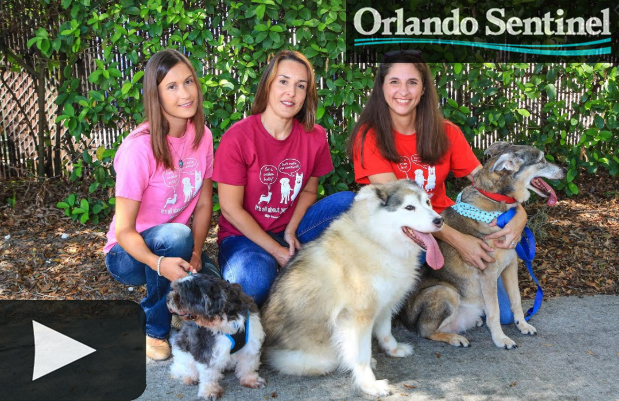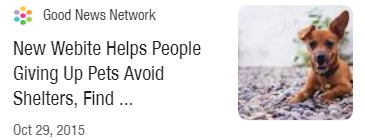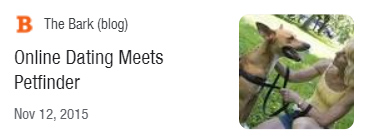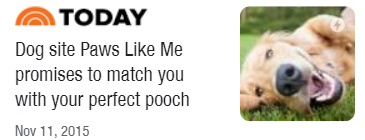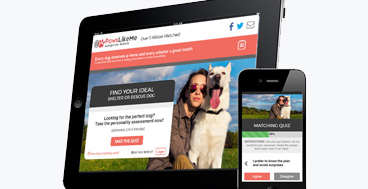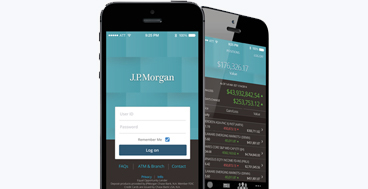Launching the 'E-Harmony' of pet adoption
PawsLikeMe pairs people to their ideal pets using an engaging pet match quiz.

Project Summary
Bringing to market the first pet search engine driven by true compatibility factors between people and pets.
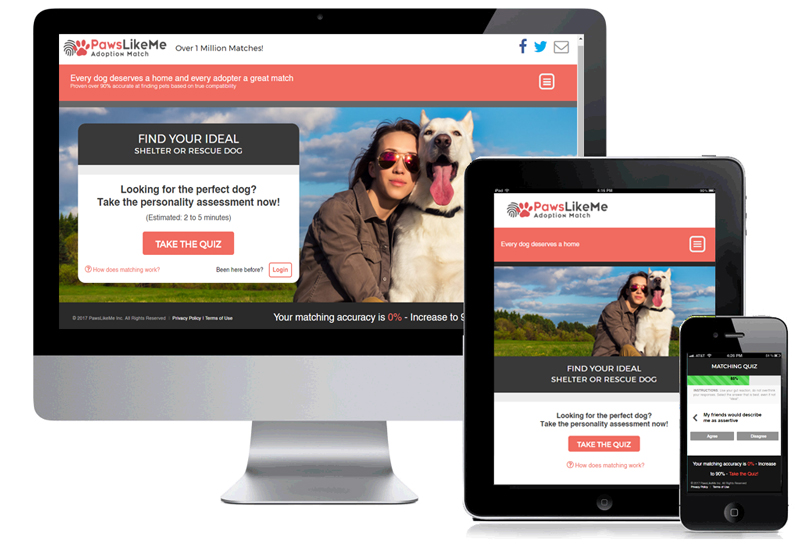
Deliverable
Fully responsive web-based matching system, with integrated search capabilities – identifying adoptable pets across shelters and rescue groups nationwide.
My Role
As Co-Founder at PawsLikeMe I was responsible for product strategy, but my background in UX Design proved crucial in our go-to-market approach. We chose to learn first, validate second, and design right.
WHY does this product matter?
As a team, we felt very passionate about our "Why" and the problems that could be solved with this product. The slide below clarifies the problems we sought to solve: limited search technology, coupled with adoption and re-homing issues.
“Regardless of WHAT we do in our lives, our WHY—our driving purpose, cause or belief—never changes.”
― Simon Sinek
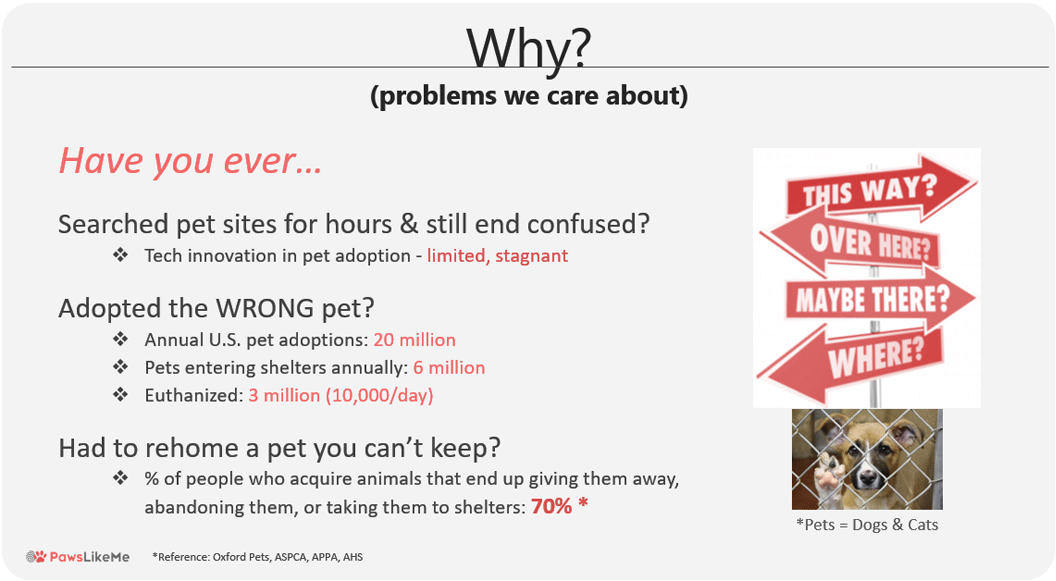
HOW does the product address the why?
The team also defined HOW the product would successfully address the problems it seeks to solve (The WHY). The next slide demonstrates how the use of an expertly crafted and accurate matching algorithm can be the vehicle for positive changes in pet adoption outcomes.
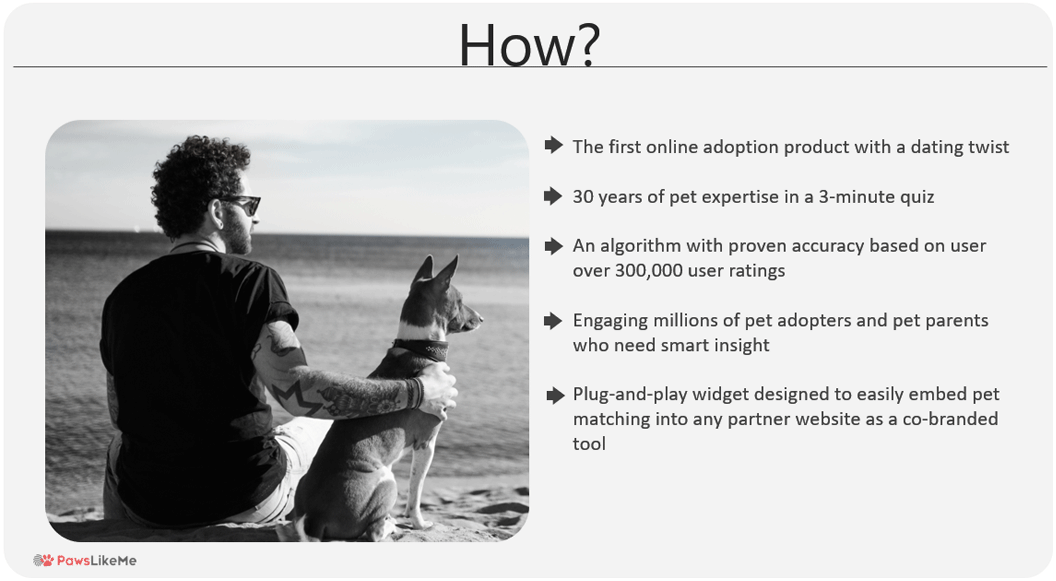
Achieving User Understanding
Exploration and Analysis
Clearly, we believed we had a winning product concept that would address major pain points in the pet adoption space and save the lives of countless animals. But we also recognized the need to move from believing to knowing. We opted to take an approach focused on validating (or countering) our existing assumptions by including user-centered design practices throughout the project lifecycle.

Challenges
With three founders from very different backgrounds, we came in with complimentary skills and tons of excitement and ideas. But our budget was tight, our timeline short and our team small. The team understood that we needed to validate our initial assumptions before putting too much of our budget into product development. We began engaging with our primary and secondary users - Pet adopters and Adoption staff.
Methods
Our exploration phase started in group discussions and individual sessions with adopters and pet parents. These study sessions were designed to observe the experience of adopting a pet, identify challenges that might be experienced along the way and understand the key factors effecting outcomes. We shadowed subject matter experts in pet adoption, including shelter staff and rescue group members.

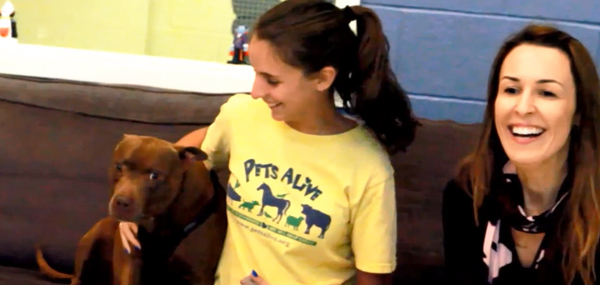
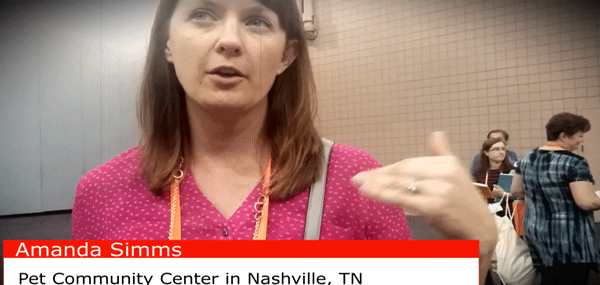
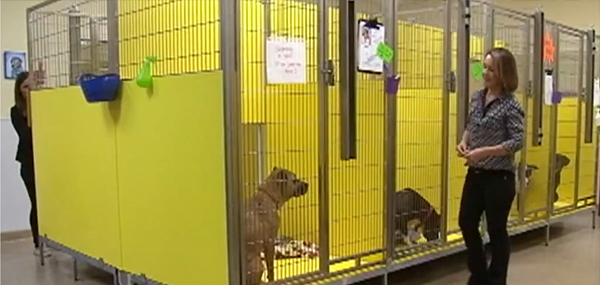
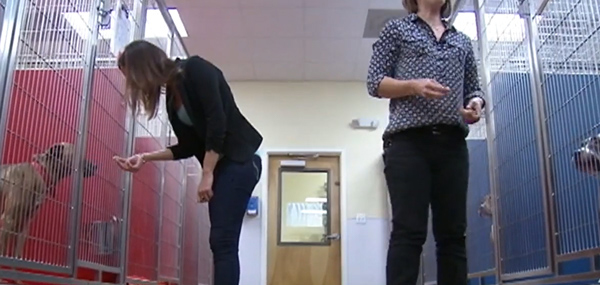
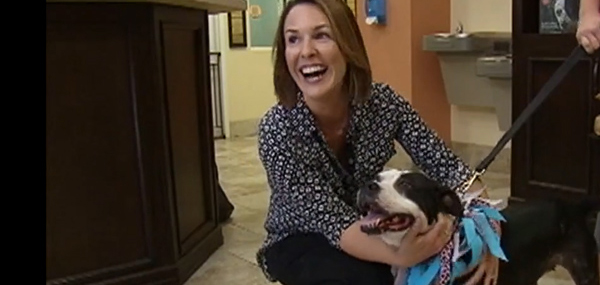
Key take-aways from pet adopters
We asked... WHY choose this product?
- PawsLikeMe cares about animal welfare
- The product helps find the best pet for family and lifestyle
We asked... WHAT do you want in the product?
- An easy to use search
- Identifying the right pet for me
- Advice on which pet to adopt
- Mobile friendly for on-the-go
The user's journey through story
Having shadowed users, we wanted to create a story that would align the problems we observed with solutions the product could offer. While we started with personas, they served primarily for internal team alignment. In contrast, the user story was designed for a much wider audience.
“Every story starts with an idea, but it is the characters that move this idea forward.” — Michael Scott
The next slide introduces our personas, or characters - Molly and Ben.

We told their story
“After nourishment, shelter and companionship, stories are the thing we need most in this world.” — Philip Pullman
The two slides below parallel the adoption experiences of Molly and Ben to highlight the benefits of personality and lifestyle based matching.
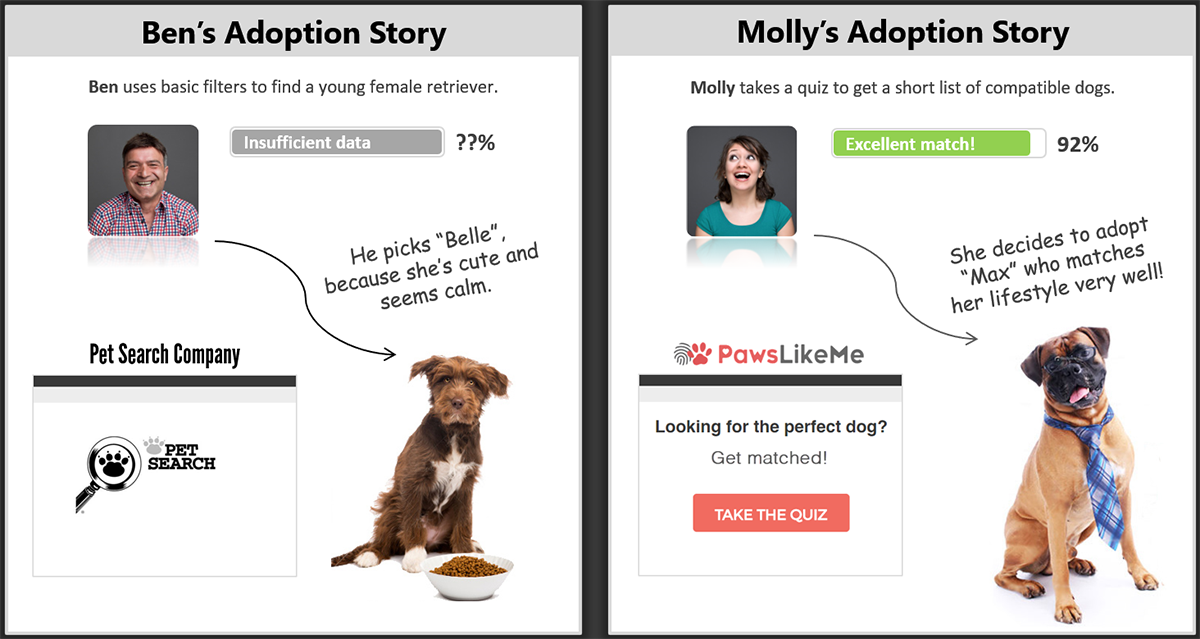
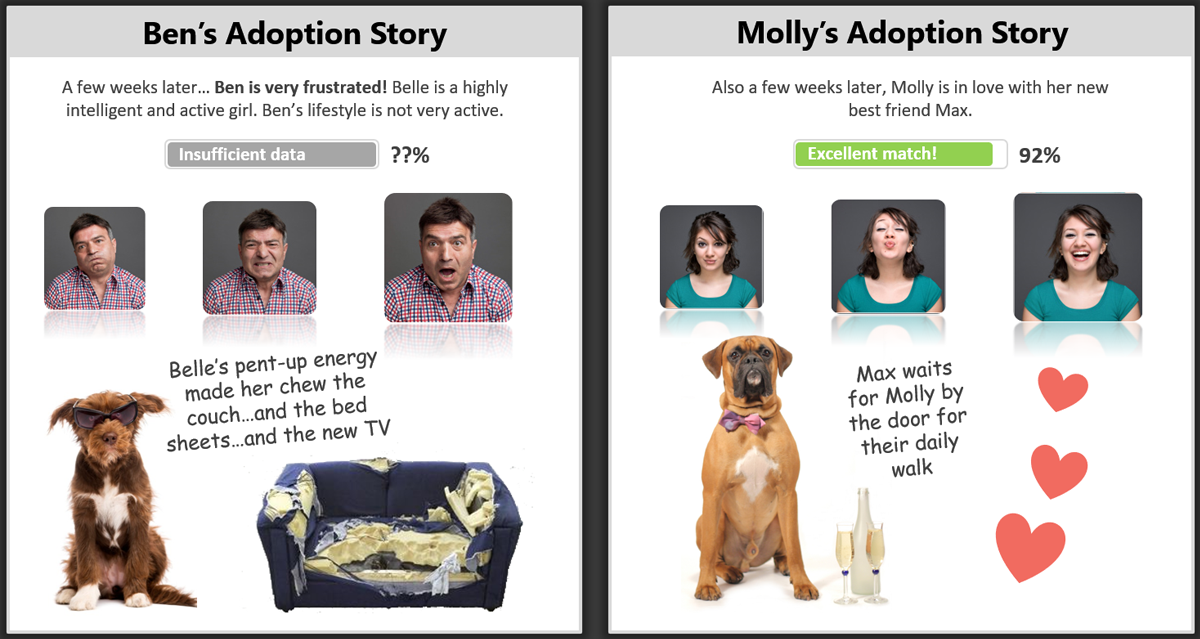
The resulting product story captured the essence of the problems our product aimed to address and served as the basis for the product’s user experience strategy and investor pitch deck. It became the driver for our design approach and positioned our competitive advantage in the pet finding space.
Prototyping and Validation
Following our first phase of exploration and analysis, the team was fully aligned and enthusiastic about the project. It was now time to put this information into practice.
The primary goal in phase two was to prototype and design the product that Molly and Ben would love to use. Budget and time-to-market were still top-of-mind.

Methods
We used an agile design and development approach that included built-in opportunities for user review and feedback. We spent the majority of our time in white-board sessions and creating low fidelity wireframes. This allowed us to identify potential issues early and offered an opportunity to reduce our margin of error in the development phase – when the cost of mistakes is at it’s highest.
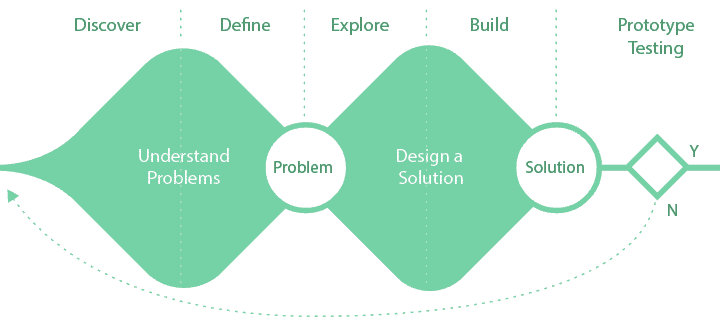
Early interface sketches
“Design is a plan for arranging elements in such a way as to best accomplish a particular purpose.” — Charles Eames
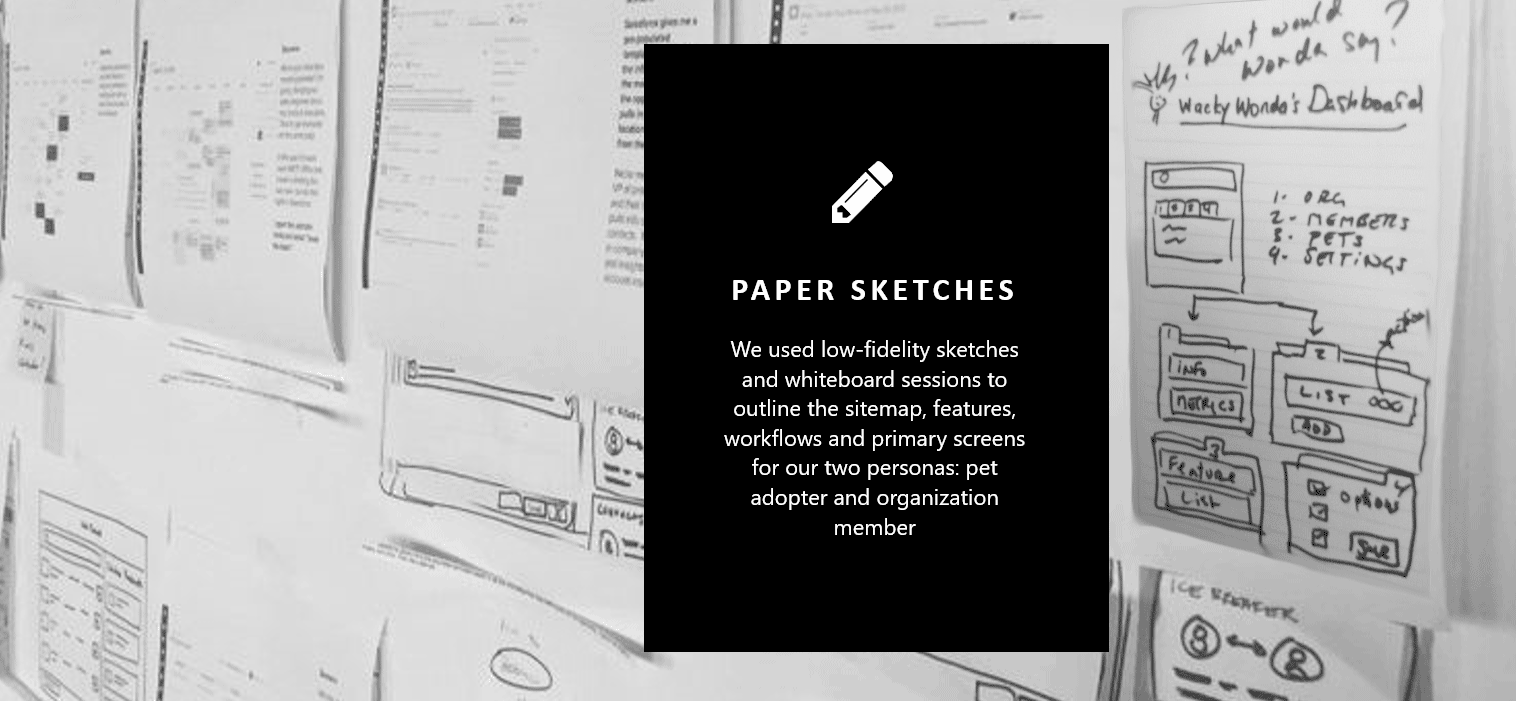
From drawing to prototypes
Low-fidelity wireframes were prepared next, using Powerpoint. We chose Powerpoint because all team members were familiar with the tool and could therefore participate in the creation process. The wireframes could easily be made interactive, so we invited a few users to try the workflows.
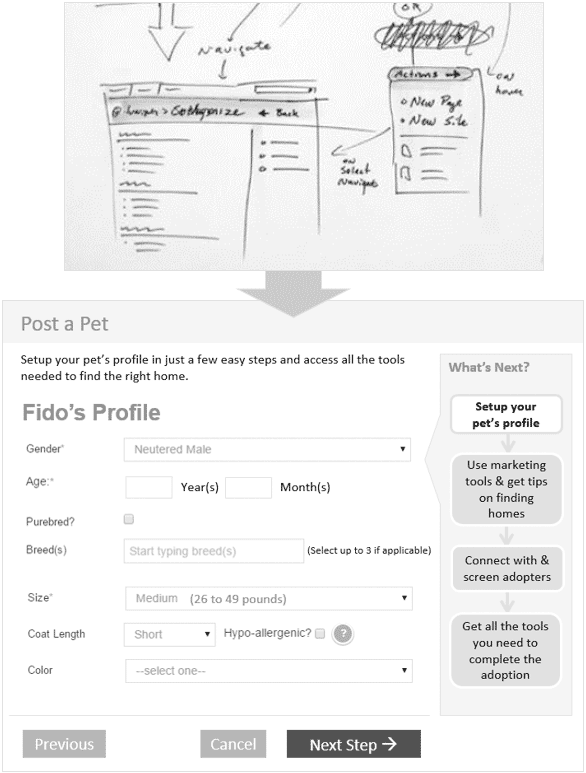
Early Lessons
Overall Adopters had a positive experience, but became frustrated due to the length of the quiz and the time it took to complete. Additionally, the lack of more traditional search filters made refining their search results cumbersome. We focused on addressing both in the subsequent design revision, which gave us more confidence in moving forward.
Visual Design brings it to life
Following the prototyping phase, we created several visual prototypes for the landing page and conducted A/B testing. This led to our final interactive prototype for the first release of PawsLikeMe.com
“Design is thinking made visual.” — Saul Bass
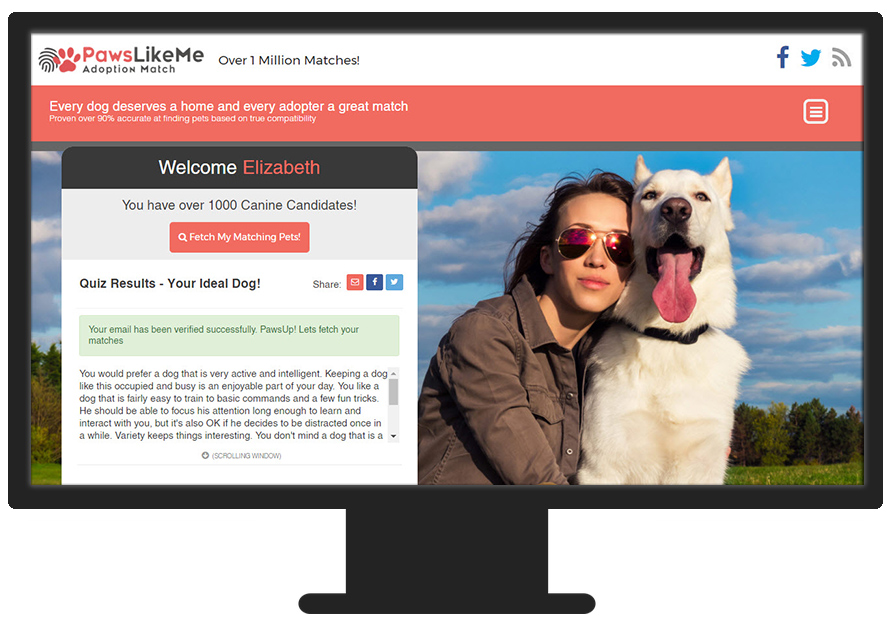

Although visual quality and appeal were top-of-mind, we needed to ensure that our visual rendering of the product supported it’s intended purpose. We used A/B testing to gauge which visuals and presentation styles were most relatable.
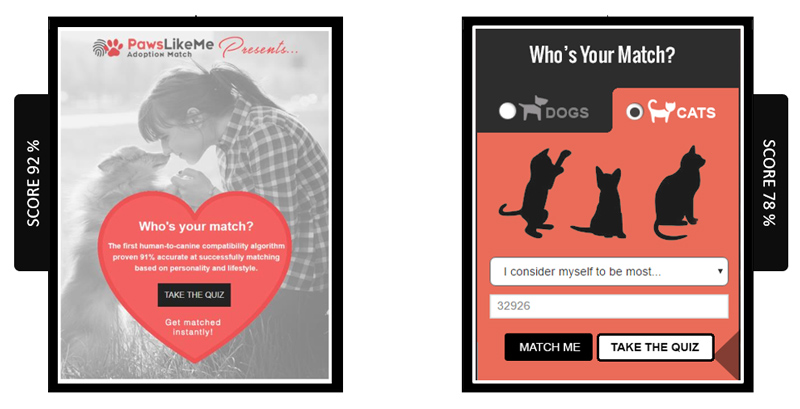
Preparing the Interactive Experience
The final task was to produce an interactive, device-friendly prototype for an offshore development team.
“The best design is the simplest one that works” — Albert Einstein

Usability Testing
The interactive prototype made usability testing online easy and traceable, providing further opportunity for refinement and a live view of how users interacted with the product.
Specifications
Using Mockflow, we embedded product requirements directly into the prototype, making information for each screen available in-context.
Development
The prototype made offshore development viable, and allowed the Engineers to focus on functionality without compromising the user experience.
The Launch
The MVP for PawsLikeMe.com was accompanied by our statewide press release and picked up by Orlando Sentinel. The article drew National attention and spawned over 50 additional write-ups, including local news coverage, radio talk shows, and a few top online news venues.
Excited by the new adoption hype, Shelters and Rescue groups across the Nation began enrolling; grabbing attention and improving outcomes for otherwise homeless pets.
Results and Impact
PawsLikeMe surpassed expectations with the MVP launched in August 2015. By October, the site had 1,138,880 unique visitors and 4,633,571 page views. Within 6 months post-launch, PawsLikeMe doubled it's membership and included about 100,000 adoptable pets nationally.
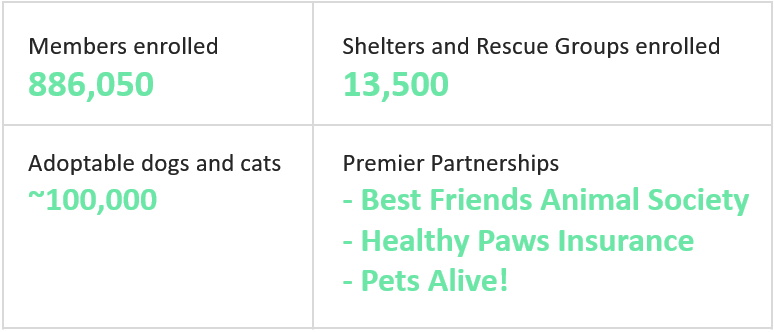
Lesson's Learned
Oops...how much traffic?
Seems like a good problem to have, but the team had not anticipated the level of traffic that came with early media coverage. Our servers were not build to support the load and the site crashed just a week after launch! The team scrambled and worked around the clock to implement upgrades and re-launch within 24 hours. It was a roller coaster worth riding.
Matching variables
Our visual display of the matching percent was designed based on a small data set and did not account for variations like location and distance which resulted in huge variances between the number of matching pets in highly populated vs more rural areas. This resulted in some users seeing too many 'perfect matches' causing distrust, while others saw too few and lacked options.
Our next iteration would need to take into account location and distance and automatically adjust results accordingly. To do this without impacting the algorithm, we decided to expand the search radius in geographic areas with fewer adoptable pets and expand the search radius for larger metropolitan areas.
Screens from later releases...
A sampling of screens from the next releases of PawsLikeMe.
Adoption Organization Partners
As organization partners engaged more with the product, there was large demand for online pet management and ways for organizations to manage their pet's personality scores. An adoption center was created for this purpose. The interfaces below showcase the landing page and pet scoring.

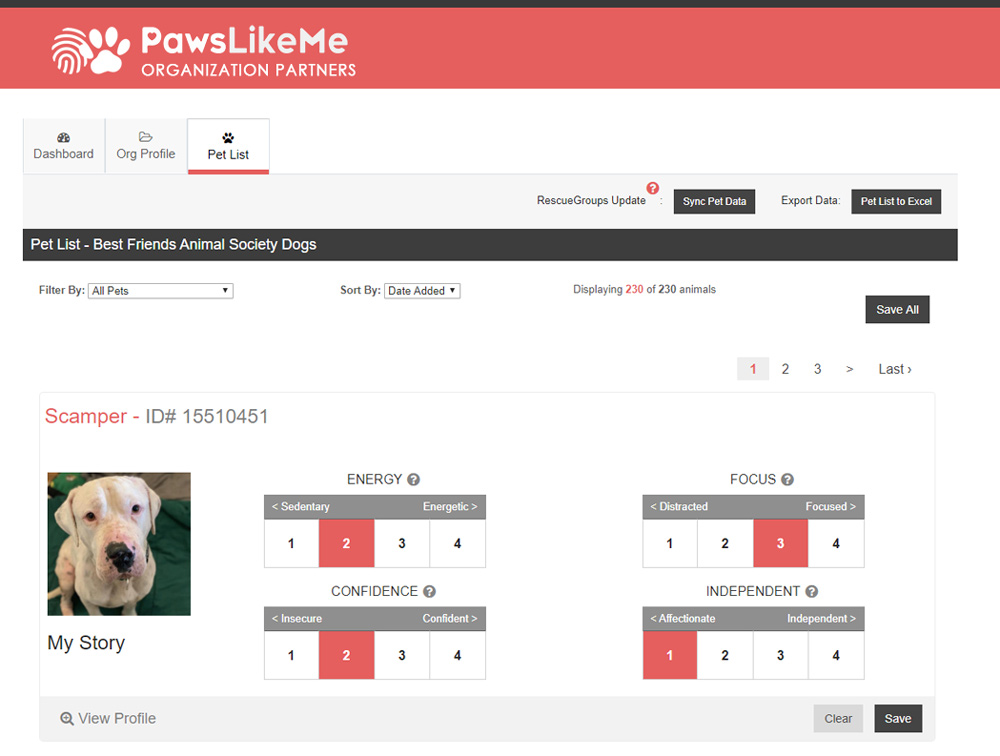
Pet Lifestyle mobile app
The Pet Lifestyle mobile app allowed pet owners to take personality evaluations for their own dog and gain insights into their personality and behavior. The following designs were rendered for app stores.


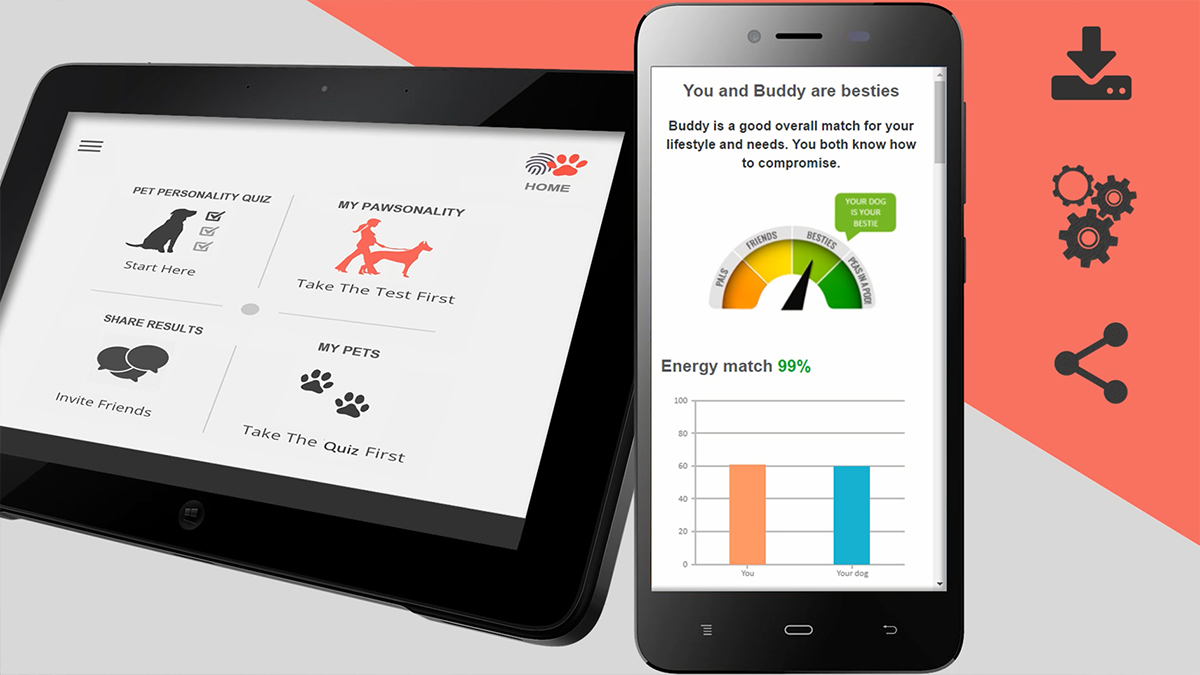
Stay tuned for more on PawsLikeMe, the adventure doesn't end with this awesome launch. Meanwhile, continue to the next product story about Elsevier's Physician Performance tool.
